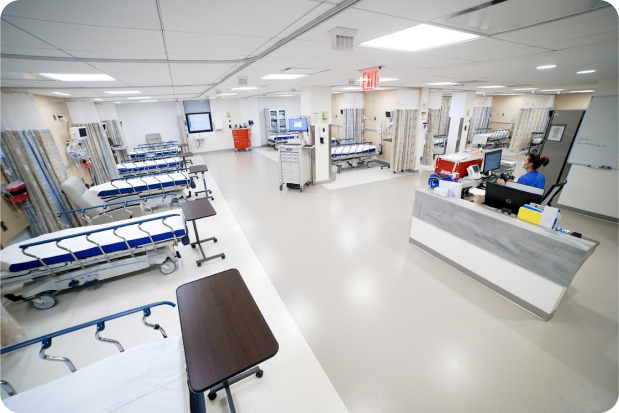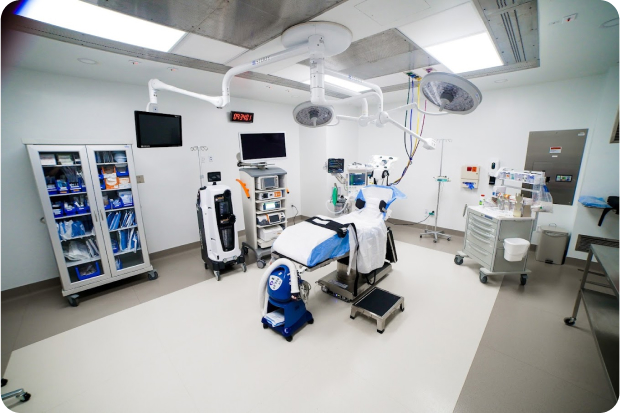 OUR LOCATIONSCall to book (212) 604-1300
OUR LOCATIONSCall to book (212) 604-1300
 OUR LOCATIONSCall to book (212) 604-1300
OUR LOCATIONSCall to book (212) 604-1300

Pregnancy brings a lot of changes to a woman’s body – whether it’s emotional, physical, or hormonal. Many of them also experience pain in different parts of the body, which is why it’s hard to tell whether the discomfort is still normal or a health problem that might affect their delivery.
But is lower back pain normal for a pregnant woman? Some of the common types of lower back pain that pregnant women experience are pelvic pain, thigh pain, back and hip pain, abdominal pain with cramping, and labor pain.
Backache is a common complaint among millions of Americans every year, but pregnant women are more likely to experience this at some point during their pregnancy. According to a study in 2015, around two-thirds of pregnant women experience lower back pain even during the early pregnancy stage. This increases in frequency and intensity as the pregnancy advances, which often interferes with their sleep and daily activities.
During pregnancy, the body goes through anatomic changes in the lower half of the body to support the unborn child and prepare the mother for labor. In most cases, the pain and discomfort caused by these changes are normal, but they might be life-threatening without proper diagnosis and treatment.
Here are some of the most common types of lower back pain that women experience during pregnancy and their possible causes:
Pregnant women often experience lower back pain because of the mechanical instability of their lumbar spine. During pregnancy, the lower spine becomes more curved (compensatory lordosis) which causes strain on the discs, ligaments, muscles, and joints in the area. The psoas muscle located in the hip also shortens, making the spine unstable and the hip and leg movements wobbly.
Patients may experience lumbar pain at any point during their pregnancy as the body changes to accommodate the baby and prepare the mother for birth. Pregnant women might feel it as a dull ache, sharp and burning pain, one-sided pain, pain that extends to the thighs and legs (like sciatica), or foot drop.
Another reason for lower back pain in pregnant women is the expanding uterus. This process applies excess strain on the vena cava (a major blood vessel) that causes blood congestion around the lumbar spine and pelvic area.
Posterior pelvic pain is also common for women as the pelvic floor attempts to accommodate changes in the growing uterus. The pain they experience is often related to the laxity of their sacroiliac joints – the looser these joints are, the more they shift the ilium (part of the pelvis attached to the joints) to an unstable position.
The body then tries to correct the ilium’s instability, which pulls pelvic floor muscles. As these muscles become tenser, the patient experiences severe pain that might last for several years. Pelvic girdle pain might feel like a stabbing, shooting, burning, or dull sensation in the pelvic area. It may also extend down to the buttocks, groin, and back of the thighs.
Some patients might mistake the symptoms like sciatica, but pelvic girdle pain is nearly impossible to locate precisely since the areas of concern might change as the pregnancy progresses.
During pregnancy, the thighs might experience a temporary pulling, compression, or insufficient blood supply to a nearby nerve. The muscle tension and swelling from the expanding uterus might also add pressure on the peripheral nerves, which results in pain and discomfort in the area.
A pregnant woman might also experience thigh pain because of the compressed lateral femoral cutaneous nerve. This nerve gives the waist and the side of the thigh sensations, which is why patients often feel pain or numbness if the nerve is pinched. Continuous compression of this nerve results in a health condition called meralgia paresthetica. The pain is usually triggered when walking or standing and alleviated when sitting.
Lower back and hip pain are common during pregnancy because of the changes in the pelvis and lumbar spine. This may result in some potential disorders that affect that area, such as transient osteoporosis and avascular necrosis of the femoral head.
Transient osteoporosis is a rare condition that might occur during the third trimester of pregnancy because of the weight on the hips. It weakens the hip bones and limits the hip’s motion which results in acute pain. Patients usually feel sudden pain when they’re walking or standing. Pregnant women usually take short strides called antalgic gait to avoid triggering the pain.
Avascular necrosis of the upper part of the thigh bone is caused by the biological changes in the woman’s body. During pregnancy, the body produces high levels of natural steroids and pregnancy hormones. These hormones combined with weight gain causes pressure on the joints and muscle strain on the hips. Patients typically feel severe pain deep in their groin area radiating down to their lower back, thighs, and knees (similar to sciatic nerve pain).
Severe abdominal pain and cramping are symptoms of ruptured ectopic pregnancy. This occurs when the fertilized egg grows outside of the uterus, most commonly in the fallopian tube. This causes the fallopian tube to rupture as the fertilized egg grows.
Aside from cramping of the abdominal muscles and mild vaginal bleeding (spotting) in the early period of the pregnancy, some patients also experience lower back and groin pain. Ruptured ectopic pregnancy is a medical emergency that should be treated immediately using surgery.
Back pain caused by uterine contractions is a common occurrence during active labor. It’s similar to menstrual cramps, but the pain gradually increases in intensity as the patient gets closer to giving birth. The pain is also more intense if the baby’s head is mispositioned and pressed against the patient’s back. This is called the occiput posterior position.
Back labor usually goes away after the delivery. In some cases, it may extend up to the postpartum stage or for several weeks after giving birth. If the pain is accompanied by other neurologic symptoms and persists for a long time, it’s best to consult a doctor to find out if it’s caused by a more serious condition.

Lower back pain during pregnancy occurs near the sacroiliac joint, the part of the hips where the pelvis meets the spin. Here are some of the most common causes of lower back pain during pregnancy:
Each patient needs a different back pain relief treatment depending on the stage of pregnancy they’re in, the main cause of the back pain, the presence of the medical condition, and the aggravating factors that trigger it.
For pregnant women, it’s extremely important to consult with a primary care physician first to ensure that their back pain treatments won’t affect their labor or the development of the baby. Here are some of the best ways to relieve lower back pain for pregnant women:
A poor posture often leads to different spine complications, but pregnant women are especially prone to developing spine problems because of the changes in their weight. Maintaining a good posture during the day takes strain and pressure off the lower back muscles and spine. It’s also better for them to take rests, limit their movement, and avoid high-impact activities.
Physical therapy is a treatment method that encompasses everything from fixing the posture, strengthening back muscles, and improving the range of motion. Pregnant women who undergo pelvic tilt and stretching exercises are always accompanied by a certified physical therapist to ensure that they’re performing the exercises properly. Flexion and extension exercises are the most common types of stretches recommended for pregnant women.
Other types of physical therapy might include prenatal massage and heat therapy that heals sore tissues and eases muscle spasms. Placing a heat patch in the lower back or pelvic area also improves blood circulation that’s important in strengthening the pelvic muscles.
This type of gentle exercise and child-birth preparation therapy is a comprehensive approach that involves focused breathing, stretching, and meditation. Several studies support the benefits of yoga for women and their babies like increased pelvic muscle strength, reduced stress and anxiety, better sleep, and decreased back pain.
Acupuncture is a traditional Chinese method that involves poking the pressure points with a thin needle to relieve pain and tension in the area. It’s completely safe to perform on pregnant women. According to a review in 2013, around 4% to 13% of European women used acupuncture during their pregnancy to help treat different kinds of pregnancy-related conditions.
Chiropractic medicine is another type of treatment that helps alleviate back pain and strengthen spine, abdominal, and even stomach muscles. It’s a safe method of adjusting misaligned joints to relieve excess tension in the spine. Chiropractic care is also safe for pregnant women as long as it’s performed by a licensed chiropractor, but it’s still important to consult with a medical professional first to find out if it’s the right treatment for you.
As a general rule, pregnant women are advised to consult with a physician first before taking any kind of medication because it might affect the development of the fetus in their body. Only the group of pain relief drugs that are considered safe for pregnant women should only be taken during the second and third trimesters.
Acetaminophen is safe to use for back and pelvic pain. Antidepressants and anticonvulsants are for nerve pain like sciatica, but they’re only for short-term use. Opioid medications are prescribed for severe pain, but they’re only taken in strict dosage and regimen to avoid withdrawal.
Learn more: 9 Simple Stretches for Lower Back Pain Relief
Back pain is one of the most common pregnancy symptoms that requires proper care and treatment. Here at New York Pain Care, we offer different therapies to help pregnant women manage back pain safely and effectively. Our highly trained staff are ready to help each patient with their needs so that they may recover quickly.
Keep your body and your baby safe during pregnancy with the pregnancy-safe treatments here at best rated NYC pain management clinic. Get in touch with us today by calling (646) 762-9336.






